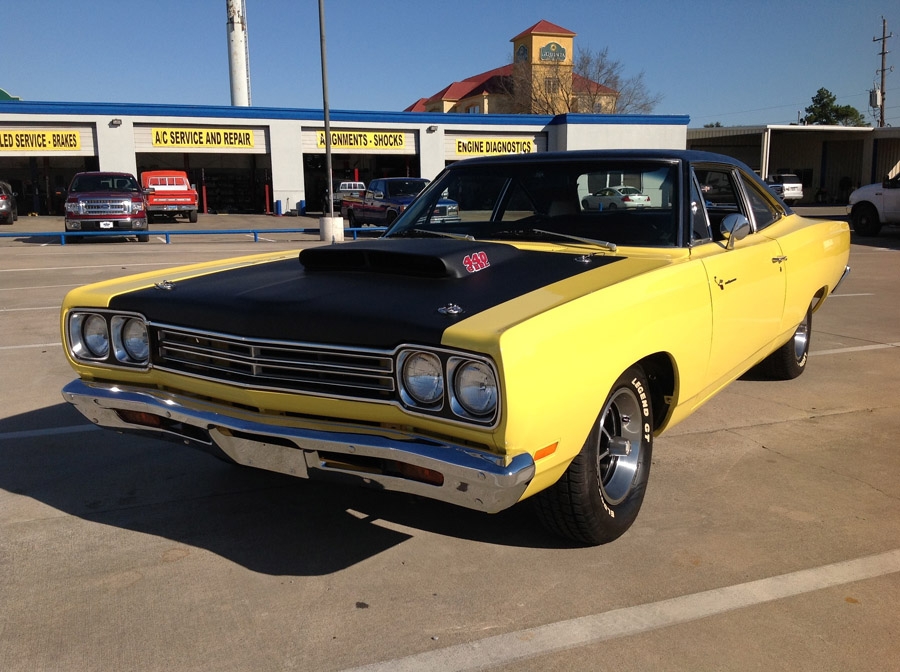- A12 replica
- Rotisserie restoration
- Less than 500 miles since restoration
- 440-ci V8 engine
- 6-bbl setup
- 3.91 gear ratio
- Hurst 4-speed transmission
- Magnum 500 wheels
- Fiberglass lift-off hood with display posts
- Yellow with black vinyl top
1969 Plymouth Road Runner A12 Replica
